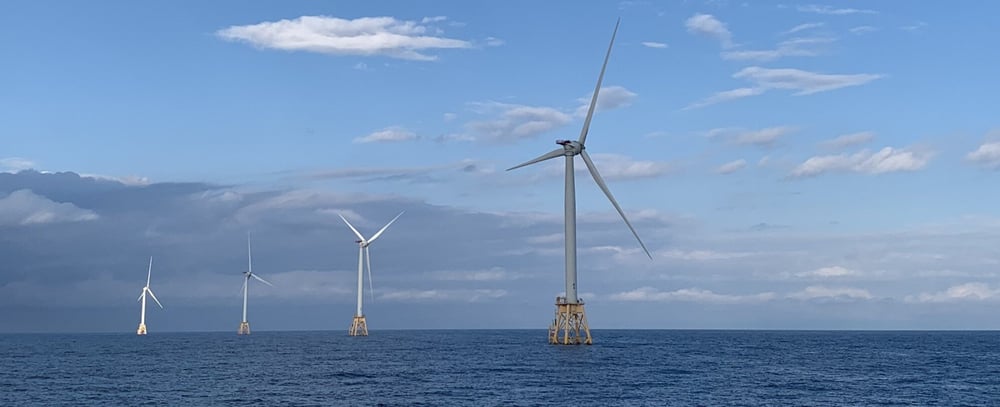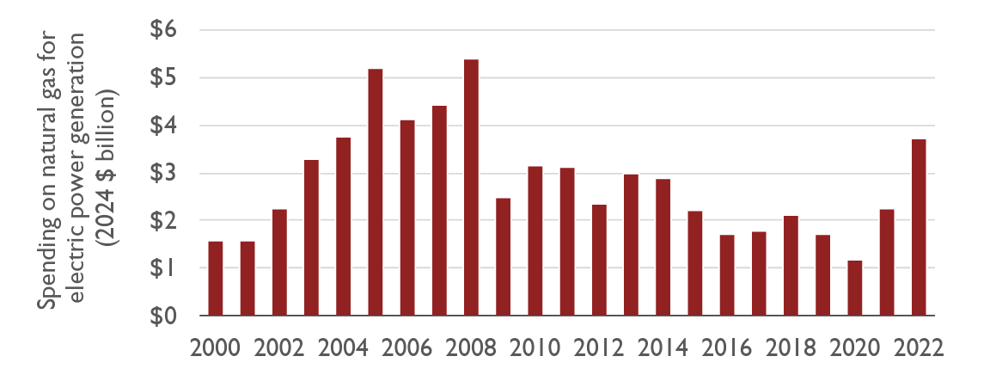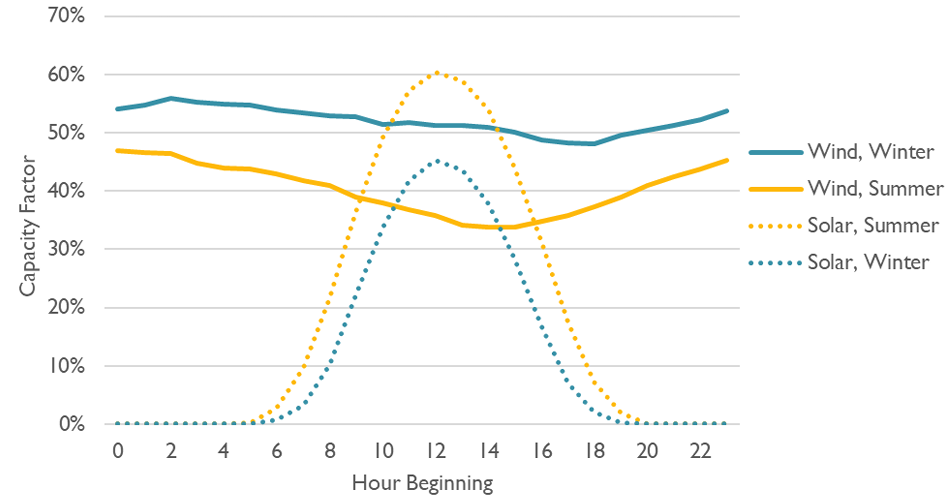Offshore Wind puts Rhode Island back on track — but it has to be done right
Green Energy Consumers Alliance welcomes the recent announcement that Rhode Island will look to procure up to 600...
It’s no secret that the Trump administration poses a significant challenge to the offshore wind industry in the United States. On the first day of his second term, Trump issued an Executive Order halting all permitting and lease sales for the technology. Nonetheless, offshore wind remains imperative to not only meeting our climate goals, but ensuring energy independence, jobs, and local economic growth. Rhode Island and Massachusetts have been at the forefront of the US offshore wind industry, and as the federal government presents new challenges, it is now more important than ever that our states continue to lead and do everything they can to support this vital resource.
Rhode Island is home to the first offshore wind farm in the United States, the first state to pass a 100% renewable energy standard (RES), and thanks to the Act on Climate, has enforceable greenhouse gas reduction targets. To date, Rhode Island has contracted 430 megawatts (MW) of offshore wind – 30 MW from the Block Island Wind Farm (fully online since 2017) and 400 MW from Revolution Wind (currently under construction and expected to be online in 2026). The state is also in the process of contracting 200 additional MW from the SouthCoast Wind project.

However, Rhode Island is falling behind on procuring offshore wind. According to the Road to 100% Electricity Report published in 2020, the state needs to procure up to 1,100 MW of offshore wind to meet the 100% RES (note that this study was based on achieving the RES by 2030, and the RES is now by 2033). That is why one of our priorities this session is H5816/S0769: an offshore Wind MW Target Bill, which requires Rhode Island to procure 1,200 MW of offshore wind energy by 2029.
Massachusetts is a major player in the offshore wind industry, contracting large commercial-scale projects like Vineyard Wind 1(VW1). VW1 is an 800 MW project that is currently providing some power to the grid and is expected to be fully operational by the end of this year, providing enough electricity for around 400,000 homes in the Commonwealth. Massachusetts is also in the process of contracting two other projects: The 791 MW New England Wind 1 project and 1,087 MW from SouthCoast Wind (The other 200 MW is going to RI). In addition to the greenhouse gas reduction requirements set by the Global Warming Solutions Act, Massachusetts also has legislation mandating the state to develop a procurement schedule and secure contracts for 5,600 MW of offshore wind energy by 2027. Based on this law, the state is expected to issue another offshore wind procurement this Fall. However, there’s potential for even greater progress. We are supporting HD3670/SD837, which would double the procurement target, enhance wildlife and labor protections, establish a commission to address supply chain challenges, and create additional benefits for host communities. Additionally, we are backing the Governor's budget proposal (70006-1003), which includes funding for the Department of Energy Resources to hire new staff to advance offshore wind efforts.
Rhode Island and Massachusetts are especially well-positioned to take advantage of offshore wind. We have some of the strongest winds off our coasts, shallow waters ideal for turbine installation, and densely populated coastlines with high energy demand. Listed below are some of the tremendous benefits offshore wind brings to our states.
Energy Independence & Protection Against Fossil Fuel Price Volatility
Offshore wind provides stable homegrown energy right here in New England. We wouldn’t have to rely on the volatile global fossil fuel market where geopolitical events can send prices skyrocketing. You may remember in 2022 when Russia invaded Ukraine and power prices in our region surged due to our reliance on imported fossil fuels. Offshore wind would have greatly mitigated that had we had it up and running at scale then. We also saw electricity prices spike during the coldest days of January and February as gas-fired power plants had to pay more for gas or oil.
Job Creation
The offshore wind industry is a growing economic sector that has the potential to generate thousands of high-quality union jobs, from manufacturing and construction to operations and maintenance.

![]() Advanced Foundation Components for the Revolution Wind project being built at the Orsted offshore wind construction hub at ProvPort in Providence, RI
Advanced Foundation Components for the Revolution Wind project being built at the Orsted offshore wind construction hub at ProvPort in Providence, RI
Local Economic Growth
In addition to creating jobs, offshore wind attracts investments and revenue. It also keeps money in New England. Right now, we are sending an average of $3 billion out of our regional economy each year for natural gas.

Source: Sierra Club & Synapse Energy Economics Inc. Charting the Wind Report
Improved Public Health
Offshore wind allow us to transition away from fossil fuels which produce harmful air pollutants such as Nitrogen Oxides (NOx) that are linked to respiratory diseases and other health issues.
Winter Reliability
Offshore wind plays a key role in improving power reliability during winter when energy demand competes between heating and electricity generation, both of which rely on natural gas. This creates a strain on the energy grid, particularly during extreme cold spells. Offshore wind tends to produce more energy during the winter when it’s windier and especially when it’s cold, making it a crucial resource during winter peaks, when electricity demand is highest. This is going to be extremely important in about 5-10 years as more people switch their heating from fossil fuels to heat pumps. Offshore wind and heat pumps go together like peanut butter and jelly. See this study by the Union of Concerned Scientists on how offshore wind could significantly reduce the risk of winter blackouts.
Combatting Climate Change
Offshore wind generates electricity without emitting harmful greenhouse gas emissions. It really is the biggest lever that we can pull to reduce our emissions from the electricity sector and mitigate climate change. We do not see how either state can meet their greenhouse gas reduction target of net-zero by 2050 without bringing more offshore wind online.

Source: Sierra Club & Synapse Energy Economics Inc. Charting the Wind Report
Green Energy Consumers Alliance is proud that Rhode Island and Massachusetts have both been leaders in solar. While solar is an important part of the renewable energy mix, it cannot meet the amount of power we need on its own. Offshore wind is strongest at night and in fall and winter, while solar shines during the day and produces more during spring and summer months. Together, along with hydro and battery storage, they can provide a balanced energy mix.
Massachusetts and especially Rhode Island are moving too slowly on offshore wind. Without further procurement of offshore wind, both states risk not only missing their climate goals, but their energy reliability and economic growth goals as well. The reality is that energy demand is increasing, and we need electricity sources to meet that demand. New fossil fuel infrastructure is not politically or economically viable. Solar can’t meet it on its own. Offshore wind at scale is the best answer.
Green Energy Consumers Alliance welcomes the recent announcement that Rhode Island will look to procure up to 600...
The following is the third blog in a trilogy. In early December, we explained the importance of Renewable Energy...
Comments